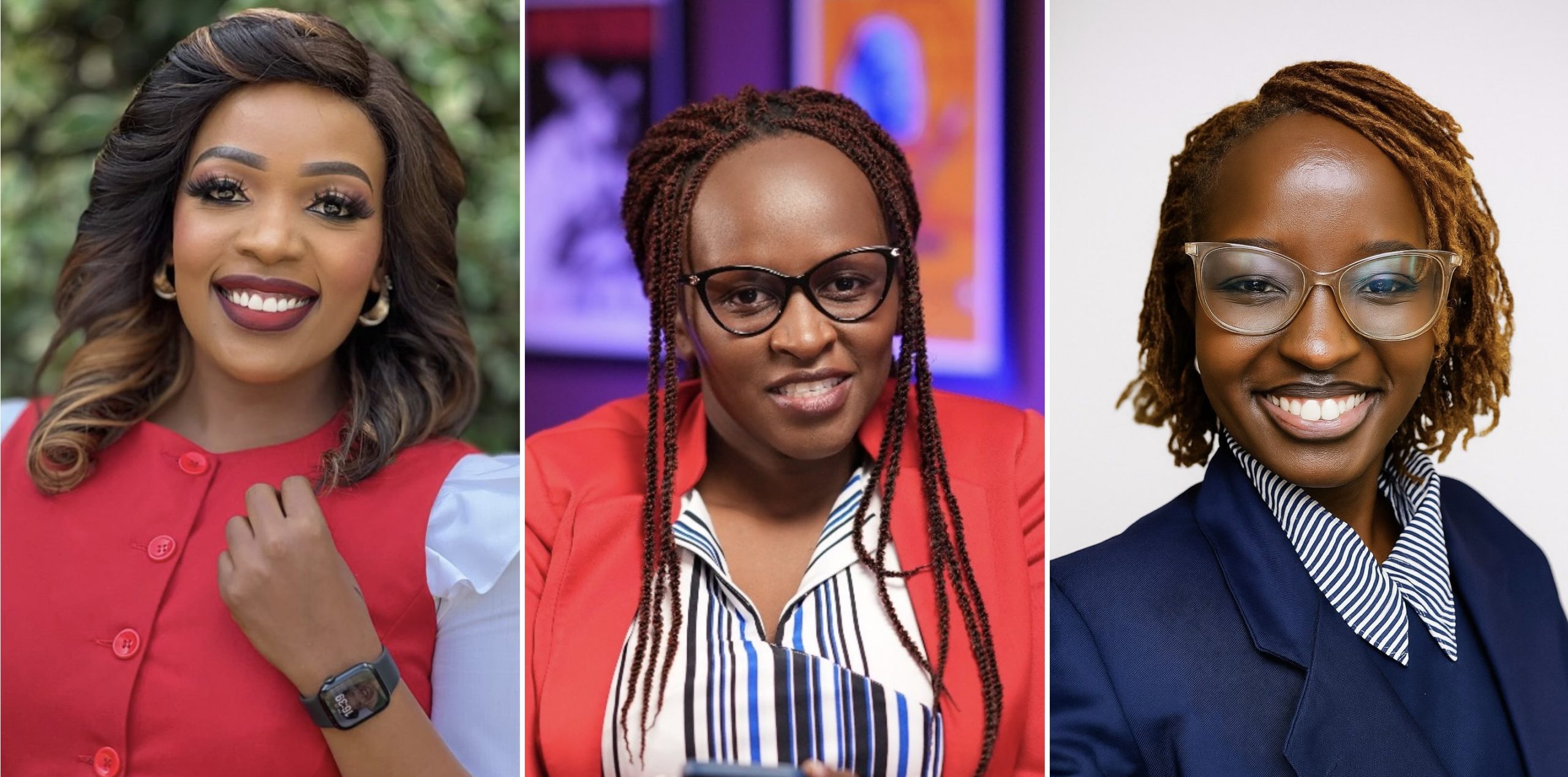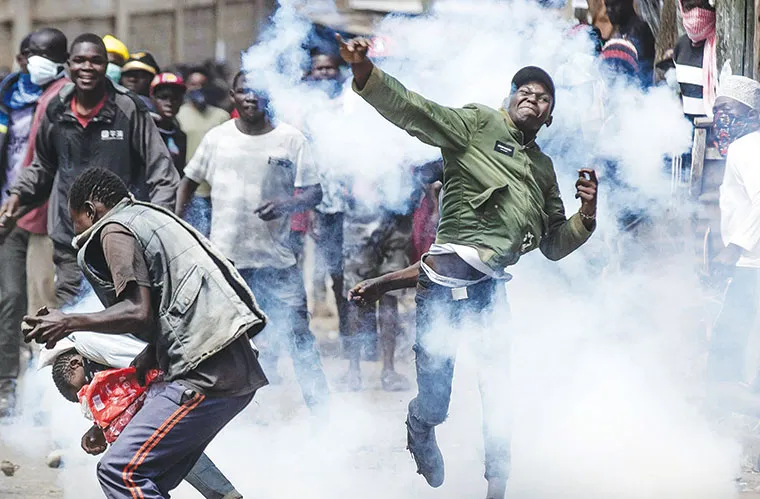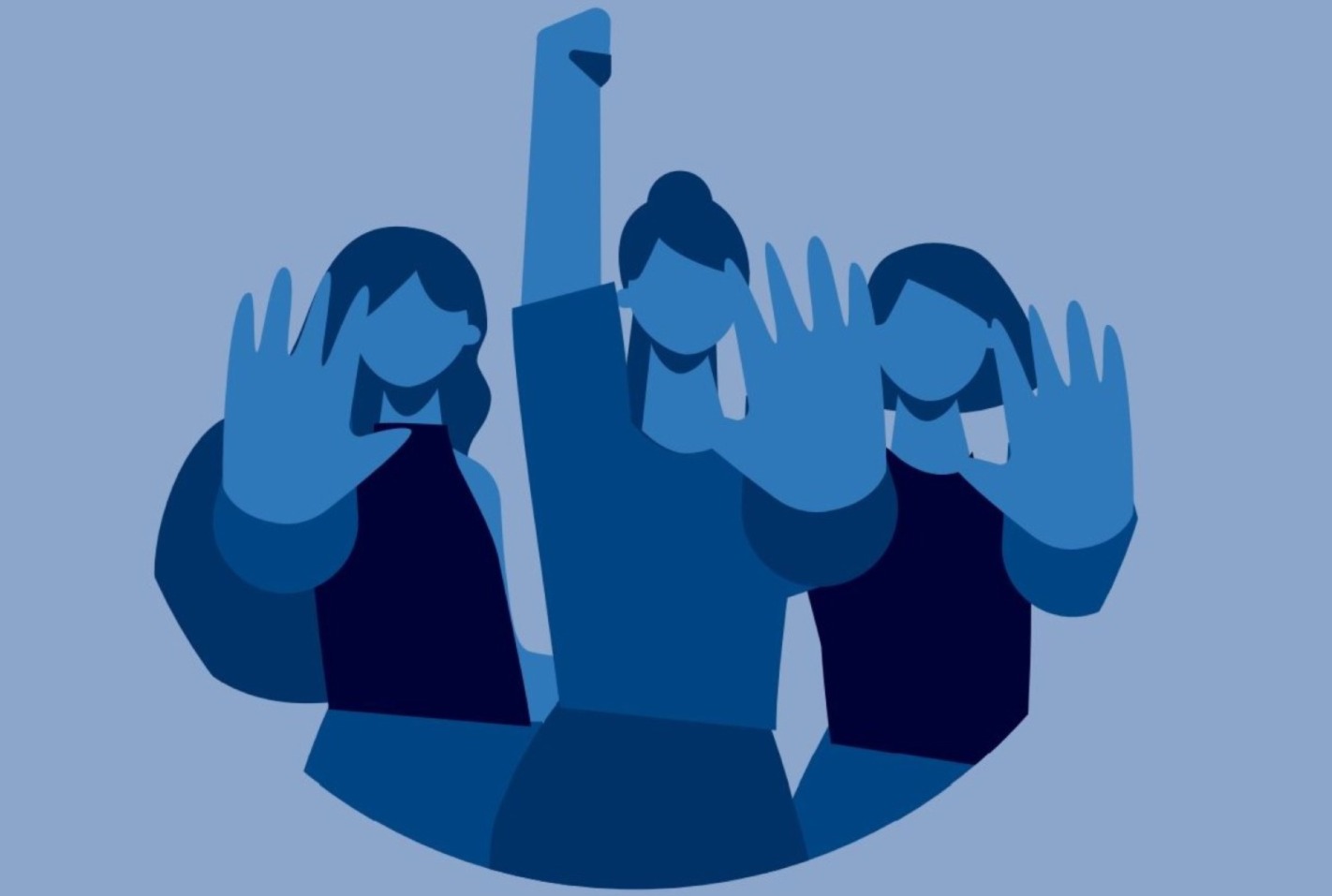When Zubeida Kananu first walked into a Kenyan newsroom nearly two decades ago, she quickly realised what the pecking order looked like. Men set the agenda, occupied the leadership desks, and dictated the subjects and the tone of the news. Stories about women’s health, family struggles, or gender-based violence were often derided as “soft” or unworthy of lead slots.
Today, Kananu is the first woman to serve as president of the Kenya Editors Guild. But even now, she says, Kenyan media still largely imagines its audience as male, politically-obsessed, and disinterested in stories that reflect women’s lives.
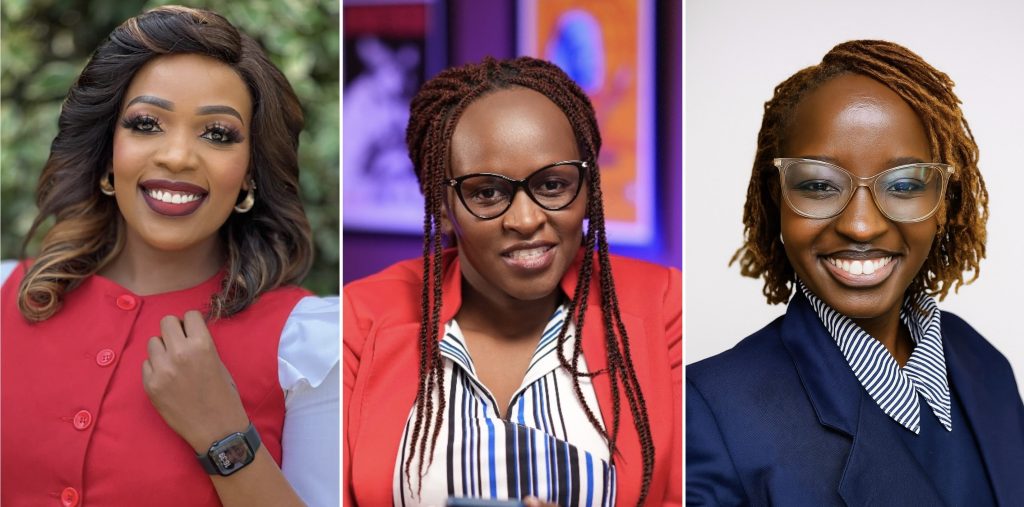
“When someone does a story on gender or family planning, some editors will ask, ‘Is that really a top story?’” Kananu said. “That perception is still there. The hierarchy of what matters hasn’t shifted much.”
While women are no longer strangers to bylines, anchor desks, or editorial meetings in Kenya, their perspectives remain curiously absent from front pages and primetime slots.
A recent regional study by the Aga Khan University’s Graduate School of Media and Communications paints a stark picture: while women make up nearly 40% of the media workforce in Kenya, they occupy only 11% of top business leadership roles and 20% of editorial leadership. These figures are very similar from the ones the Reuters Institute’s researchers collected for this annual take on women and leadership in news media around the world.
The effects of this imbalance ripple through every layer of the news-making process from who gets quoted to what gets covered, and how.
This gap in leadership doesn’t just shape hiring or promotion patterns but the news itself. When decision-making roles are largely held by men, coverage tends to tilt toward the interests, language, and assumptions of male audiences. Gender is rarely the explicit reason stories are sidelined, but it is often the invisible frame that determines whose voices are heard, which issues are spotlighted, and how stories are told.
“When you have predominantly male editorial decision-makers, you’re more likely to see coverage that reflects a male gaze,” said Dr. Hesbon Owila, a lead researcher of the study. “It’s not that they’re doing something wrong. It’s that newsroom culture has normalised certain perspectives and priorities over time. They become unconscious frames.”
These unconscious frames are not limited to individual attitudes, Dr. Owila explained, but structural: “It’s not about ill will. It’s about editorial habits formed in a system that normalises men as subjects, sources, and experts. Even women editors can internalise these frames.” This helps explain why, even during highly publicised campaigns against sexism, stories about women receive limited attention, especially on TV.
Missing from the headlines
During the 16 Days of Activism against Gender Based Violence campaign period in 2023, the report found that women were significantly underrepresented in television news coverage related to politics, business, and economics. Even when women were featured, their appearances were largely confined to breaking news, with little room for analysis or depth.
“Only 11% of the total number of newspaper stories covered women in political, business, entrepreneurship and economic events or activities,” the report noted. For television, the figure was even lower at just 9%. One major broadcaster, Citizen TV, aired very few stories on these topics throughout the entire campaign, as noted by Dr. Owila.

Women were also found to be underrepresented not only in volume but in visibility and prominence. “Across East Africa, women were covered or mentioned in headline stories in only 60% of the 552 cumulative days reviewed, with 40% of days showing no coverage at all,” said the report.
When women were present in news stories, they were often portrayed in symbolic or passive roles. Coverage that celebrated women as leaders such as CEOs, entrepreneurs or lawmakers were rare. “Women were framed as victims of circumstances, including victims of a male-dominated world,” the report said. The study further observed that women were more likely to appear in stories about national events or beauty pageants than in coverage related to governance, economics or entrepreneurship. Even when women are covered, they are often photographed but unnamed, their expertise ignored or undercut.
For Kananu, President of the Kenya Editors’ Guild, this imbalance stems from a deep-rooted editorial bias. “For years, Kenyan media has been structured to appeal to a male, politics-obsessed audience,” she said.
According to the Institute’s factsheet on women and newsroom leadership, only 18% of Kenya’s top editors are women, the third lowest among the 12 surveyed countries. The report attributes this gap to entrenched male-dominated networks, but there are signs of change: 53% of Kenyan news consumers now access at least one woman-led outlet, a sharp 21-point increase from 32% the previous year, the largest year-on-year rise across all markets studied.
“We are not where we want to be but we are pushing,” Kananu says, citing the Standard Group’s appointment of Kenya’s first female CEO as proof of incremental progress.
The representation deficit
Beyond the newsroom hierarchy, the impact of this gender disparity is starkly visible in the content itself. A 2021 survey by Baraza Media Lab and Odipo Dev found that women are quoted eight times less than men in political stories.
Muthoni Mukono, a lawyer and communications expert, says these portrayals are part of a broader pattern of editorial neglect. She said that she has all but tuned out of traditional Kenyan news. “It’s exhausting,” she said. “Unless a woman is a victim or it’s gossip, the media doesn’t care.”
For Mukono and others, Kenyan media has long failed to reflect the realities of women’s lives. “They’ve created a hierarchy of issues,” she said. “Corruption and elections are treated as serious. But femicide? That’s just a sad story. Not political, not urgent.” She noted a pattern of editorial framing that continues to center men, even in coverage of violence against women. “When a woman is killed, her face is everywhere,” she said. “But the perpetrator often goes unnamed. It becomes a contest for sympathy, not a call for accountability.”
Mukono described mainstream news as emotionally taxing and at times even re-traumatising. Like many women, she has turned to alternative platforms: feminist collectives, podcasts and grassroots media that, she said, offer stories that feel more honest and resonant. She now follows online platforms like African Uncensored, as well as community theater groups that tackle social issues more deeply than conventional news broadcasts.
That shift has not gone unnoticed by media leadership. Kananu, president of the Kenya Editors’ Guild, sees it as both a warning and an opportunity. “If we don’t adapt, we’ll be left behind,” she said. “Our audiences are online, and they want content that reflects their lives.”
The Kenyan women who avoid the news
Mukono’s disillusionment is not unique. Many Kenyan women say they actively avoid the news, finding it disconnected from their lived experiences. Mukono said she steers clear of certain topics entirely, particularly what she described as “petty politics,” with repetitive debates featuring the same political figures and familiar talking points.
“It’s the same old people, the same recycled voices,” she said. “Every morning it’s the same politicians on TV.”
Even when women are in the political spotlight, she said, they are judged by different standards. She pointed to a recent viral incident involving two female lawmakers who were involved in a physical altercation. “When men fight in Parliament, it’s called ‘passion.’ When women do, it’s ‘indiscipline.’”
Mukono believes the news industry must move away from event-driven reporting and instead prioritise deeper journalism that reflects a broader cross-section of society. “Stop imagining your audience is only a man,” she said. “It’s also a mother, a nurse, a student. Quote more women. Amplify more grassroots voices.” Journalism, she added, should do more than inform: “It should serve.”
New voices, new platforms
This kind of reimagining is exactly what Sarah Mwangi is aiming for through ‘Fanya Mambo Africa’, a bold, youth-facing political podcast produced by Thee Alfa House, one of Kenya’s top podcasting outfits. Mwangi launched the show in the wake of the 2024 “Reject Finance Bill” protests, when many Gen Z Kenyans turned to TikTok and Twitter for news and civic education, bypassing traditional newsrooms altogether.
“There was a vacuum,” said Mwangi. “The mainstream media wasn’t speaking to us, and especially not to young women.”
The show is part of Thee Alfa House’s broader push to engage younger audiences through digital platforms. According to a 2025 report by OdipoDev, Thee Alfa House ranks among Kenya’s top 10 most-viewed podcast creators on TikTok, with over 15 million total views. On YouTube, it has amassed over 11.8 million views across 622 podcast episodes, making it one of the most prolific political podcast producers in the country.
Mwangi said their audience is largely young, drawn from both urban and rural areas. The goal, she explained, is to connect policy to everyday concerns. “We try to explain how decisions in Parliament affect their daily lives,” she said. Mainstream media, she added, “rarely did that in a language or format they could relate to.”
Still, the challenge of engaging women remains. “Political media is male-dominated, both on air and in the audience,” she said. “We try to spotlight women leaders, but there’s still a perception that politics isn’t for us.”
Going beyond representation
Kananu, Mukono and Mwangi agree that the solution doesn’t lie in numbers alone. Representation matters, but so do editorial values. “We need more women in leadership,” Kananu said. “But we also need to change how leadership thinks.”
That shift is already underway at the margins. Feminist media collectives such as FEMNET, AMWIK and WanaData, youth-led newsrooms and gender-focused digital platforms are challenging traditional editorial norms. They produce stories not just about women, but for them, stories that reflect the complexities of gender, identity, power and daily life.
Yet these efforts often operate on the periphery, underfunded and excluded from mainstream channels. Many rely on crowdfunding, grants or unpaid labor, existing outside conventional advertising models. Mwangi sees that as both a risk and opportunity. “If legacy media wants to stay relevant, it can’t afford to ignore us,” she said.
For now, a growing number of women are rewriting the rules of engagement. They are building their own platforms, shaping their own narratives and carving out spaces for truth. “It’s not just about visibility,” Mukono said. “It’s about power.” That power, she argued, is undermined when women are framed as victims without any context.
“You see stories about women getting attacked or humiliated,” she said. “But rarely do you see what comes next. It’s not about justice or reform. It’s about momentary outrage.”
Inside newsrooms, deeper barriers persist. Many women exit journalism early, worn down by harassment, stalled promotions or hostile work environments. Kananu warned that increasing recruitment without tackling these structural issues will not close the leadership gap. “I know incredibly talented women who left journalism not because they weren’t good,” she said, “but because the system was designed to exhaust them.”
Between crisis and opportunity
Newsrooms face their own existential threats. As advertising revenue migrates online, legacy outlets are scrambling to survive.
In this environment, alternative platforms are gaining influence. Several podcasts and digital series have sparked national debates and policy reviews. They have become modern public squares, spaces where women can speak on equal footing without the gatekeeping or aesthetic scrutiny of broadcast media.
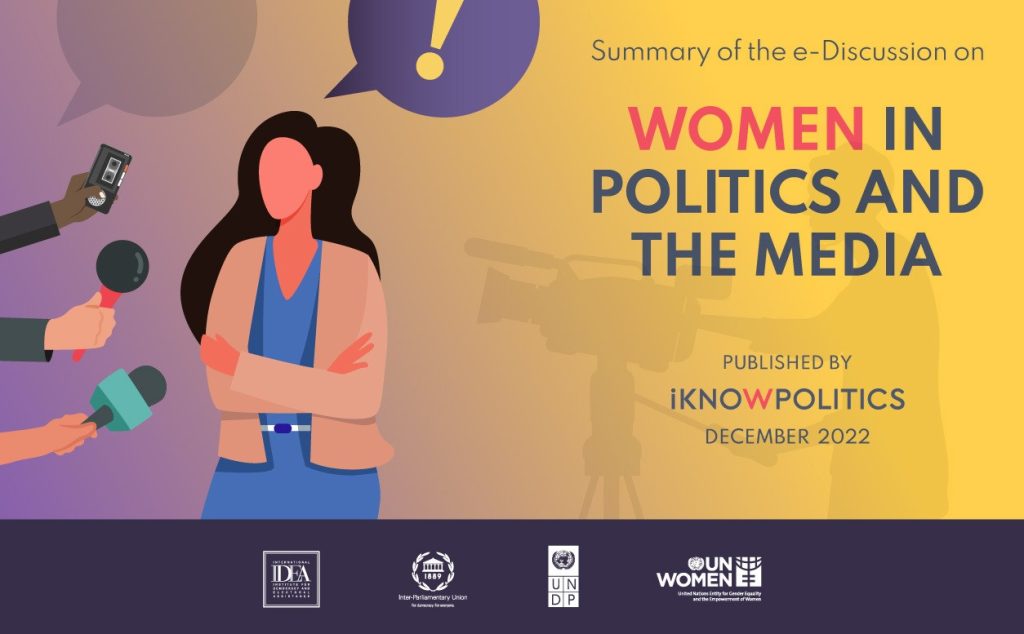
“You don’t need perfect hair or an expensive studio,” Mwangi said. “You just need a mic, a story and a community.”
However, reach has its limits. Many women-led platforms struggle to scale, constrained by uneven funding and digital access gaps, especially in rural areas or among older women without smartphones.
As the push for media reform gains traction, many Kenyans are calling for deeper, structural change. Mukono believes the stakes go far beyond newsroom diversity. “When women are poorly represented in the media, it’s not just a gender issue,” she said. “It’s a democratic failure.” In a media landscape that helps shape policy, sway public opinion and hold power to account, sidelining half the population comes at a cost.
Kananu remains hopeful but clear-eyed. “Diversity isn’t just about who sits at the table,” she said. “It’s about who sets the agenda.” For now, the table is being rebuilt piece by piece by those who refused to wait for a seat.
This story was originally published by Reuters Institute and is credited as such.Full link below
